by Penny Woodward
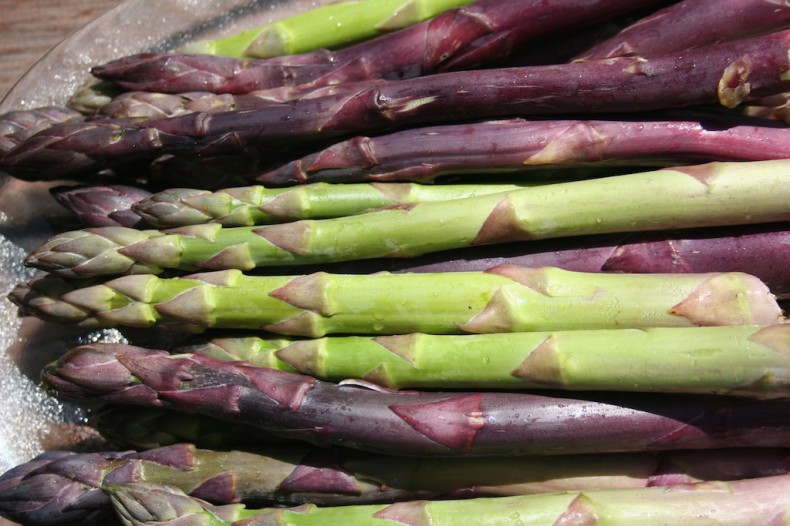
Asparagus spears
Asparagus (Asparagus officinalis) is a tough, rewarding, long term vegetable that once established will give many years of delicious, nutritious spears. A perennial plant, it is a member of the lily family (Liliaceae) and has been grown and eaten for more than 2,000 years. If you haven’t ever tried growing asparagus, you probably should, and now is a good time to plant it. Read more
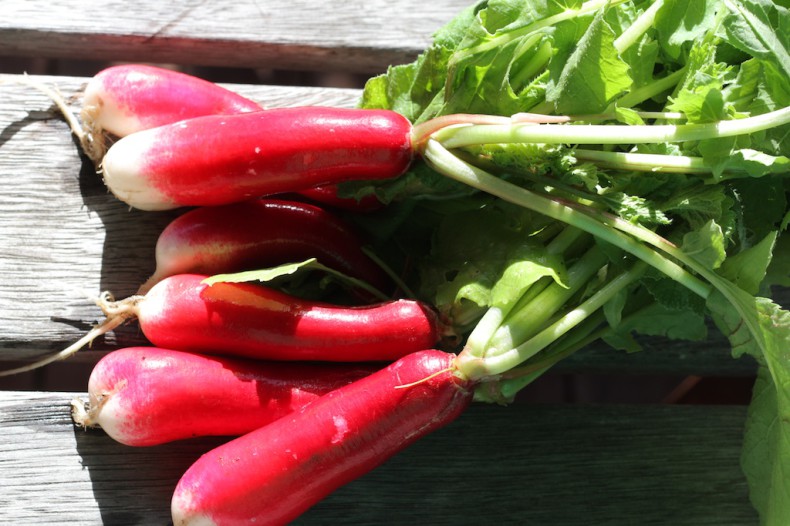
French Breakfast radish
This bite sized treat is one of the easiest of all vegetables to grow and my favourite radish. Mild flavoured ‘French Breakfast’ radish (Raphanus sativus) was first introduced in Paris in 1879. The market porters in Paris used to eat these radishes with butter and salt as a mid-morning treat, hence French Breakfast. Sow seed into any reasonable garden soil in full sun to semi-shade, keep moist and thin to 5cm spacings once they have a few leaves. Add the thinned leaves to salad. Bubls can be harvested after 4-6 weeks and if you want to make sure you have them on hand when ever you feel like one, then sow new seed every three weeks. These mildly spicey radishes make a delicious snack on their own, or dunked in a dip, or emulate the French porter and cut in half, spread with butter and sprinkle with salt, yum! They are also, of course, delicious in salads or used as a garnish on a range of dishes. Young and older leaves also make a slightly spicey salad leaf. Read more
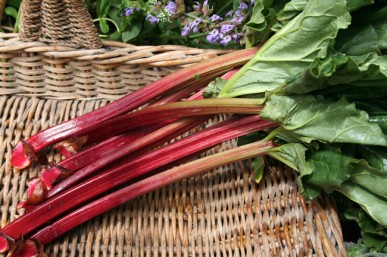
Bright red rhubarb stems
If you are an extra in a movie, providing background audience noise, you are supposed to murmur rhubarb, rhubarb, rhubarb. I don’t know where this idea originated or why rhubarb (why not cabbage, cabbage, cabbage for example!). Sometimes ‘peas and carrots’ are substituted but I do know that in Asterix the crowd always murmurs rhubarb, rhubarb, rhubarb.
Right now in gardens in Southern Australia the rhubarb clumps are thriving and many families are harvesting big bunches of stems and turning them into stewed fruit, crumbles and cakes. I have just found a new rhubarb cake recipe, it came from my sister via her friend’s grandmother and it is delicious (see the end of the article for the recipe). So, although now is not the time to plant rhubarb it is the time to harvest it and eat it. If you don’t have any, check our your neighbours’ gardens and later in the year (late winter) see if they will divide their clump and give you a piece.
Instructions for planting, growing and harvesting follow. Read more
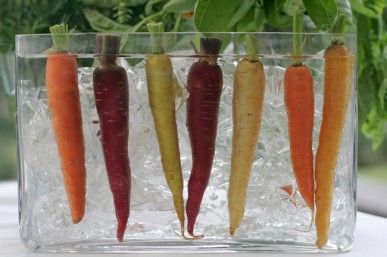
Colourful heirloom carrots
The early Romans grew purple and white carrots, but it is believed that the first purple carrots came from Afghanistan, Pakistan and northern Iran. Purple, white and yellow carrots were imported to southern Europe in the 14th century and were widely grown in Europe into the 17th Century. Our familiar orange carrots only appeared in 16th century Holland when patriotic Dutch growers used seed from purple carrots and yellow Turkish carrots to produce orange roots, reflecting the colour of the ruling House of Orange. Over the ensuing centuries, orange carrots came to dominate and carrots of other colours were only preserved by growers in remote regions of the world. Purple and white carrots still grow wild in Afghanistan where they are used by some tribesmen to produce a strong alcoholic beverage. Read more
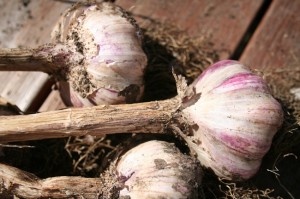
Garlic 'New Zealand Purple' is a more cold tolerant variety
Now is the time to plant garlic. Don’ t wait until the shortest day as this is generally too late. Anytime from now until the end of May is fine.
I am planting some early garlic now, and in another month some of my home-grown from last year and a month after that some more. I want to make sure that I have my own fresh garlic available all year round.
Why grow your own?
— We are all used to the idea that tomatoes eaten straight from the garden taste so much better than the supermarket variety. Well the same is true for garlic.
— Garlic is easy to grow and takes up very little space.
— All imported garlic is sprayed with methyl bromide when it comes into Australia, not only does methyl bromide deplete ozone, but it is also harmful to humans. As well as this, much of our imported garlic comes from China where pesticides are routinely used, and only 5% of vegetables imported from China are checked for chemical residue. Read more





